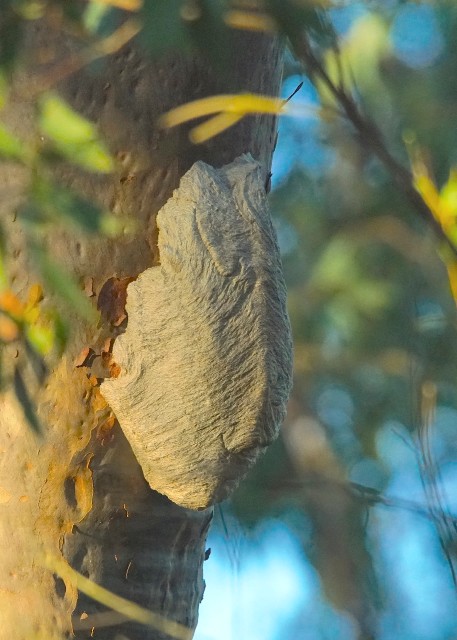This article and accompanying photos were kindly provided by Ed Frazer (August 2017), who has lived in the district for 45 years and is well known for his award-winning photos of birds on his Brookfield property.
Working in the bush has its hazards and biting creatures are one of the most painful and frequent! We have quite a few that you might encounter in the Moggill Creek Catchment.
Which is the worst? Well they have all had a go at me and this is my list rating from one to ten. What is your experience?
| 1. Midges: | Don’t really sting, but they certainly itch! |
| 2. Bees: | Sting doesn’t last, but a problem if you are allergic |
| 3. Hairy caterpillar: | Hurt and cause a rash that hangs around |
| 4. Scorpions: | The ones with the small pincers are the worst |
| 5. Large paper wasp: | Sting is severe but doesn’t last long unless a lot get you |
| 6. Jumping spider: | Bite is not the problem – the toxin rots the flesh from some bites |
| 7. Small paper wasp: | Hurt more than the bigger ones and last longer too |
| 8. Assassin bugs: | Really hurt and last a long time and the flesh around the sting rots |
| 9. Bull ants: | One you’ll remember for a very long time … |
| 10. Bullrout (in the creeks): | This one is a lifer – you’ll never forget it !!! |
Hints and tips
Clothing
Wearing suitable clothing and using insect repellent helps avoid trouble.
Treatment
Ice, hot packs, vinegar, calamine lotion – nothing really works for me, but it can help distract you from the pain.
Anaphylactic reaction
Can be a serious problem for a small number of people. Get an ambulance – don’t muck around.
Carry an Epipen if you know you may have a problem.

Ropalida romandi. I haven’t been stung by this little Yellow Paper Wasp and don’t care to!
It swarms and chases intruders and stings multiple times with a very nasty sting.
Usually it is high in a tree, but can be attached to the walls of a house.
The entrance is at the bottom of the nest.

